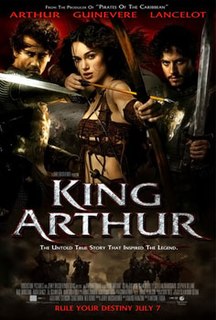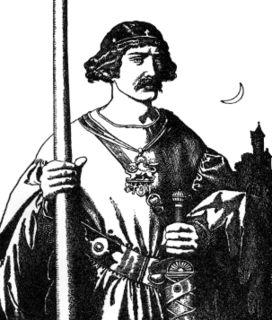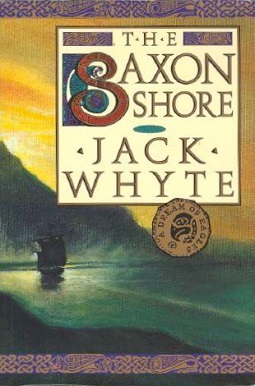Overview
The story takes place around 520, thirty years after the battle of Badon, and ten years after Camlann. It is told in third person, from the point of view of numerous different characters. Through flashbacks and narrations by some of them, details of the past are revealed, concentrated in the periods before and after Arthur’s great victories over the Saxons. The plot centres on the 'Chalice of Sovereignty', a cup which Arthur obtains in mysterious circumstances and which leads to his acclamation as Amherawdyr (Emperor) of Britain. Now, ten years after his death, certain kinglets are trying to obtain the Chalice, while former members of Arthur's court struggle to stop them. As the series progresses towards its climax, these characters are drawn together, and are joined by younger companions, both Britons and Saxons. For a moment the spirit of Arthur's Britain is revived, but at the same time it is clear that the future belongs with the Saxons. The novels are steeped in the early Welsh history, myths and legends, uninfluenced by the later Arthurian Romances. While there are strong elements of fantasy, such as scrying and the echo of legends in present events, the setting is mostly realistic, even gritty.

Scrying, also known by various names such as "seeing" or "peeping", is the practice of looking into a suitable medium in the hope of detecting significant messages or visions. The objective might be personal guidance, prophecy, revelation, or inspiration, but down the ages, scrying in various forms also has been a prominent means of divination or fortune-telling. It remains popular in occult circles, discussed in many media, both modern and centuries old.

The Holy Grail is a treasure that serves as an important motif in Arthurian literature. Different traditions describe it as a cup, dish or stone with miraculous powers that provide happiness, eternal youth or sustenance in infinite abundance, often in the custody of the Fisher King. The term "holy grail" is often used to denote an elusive object or goal that is sought after for its great significance.

Guinevere, often written as Guenevere or Guenever, is the wife and queen of King Arthur in the Arthurian legend. Guinevere has been portrayed as everything from a villainous and opportunistic traitor to a fatally flawed but noble and virtuous lady. She has first appeared in Geoffrey of Monmouth's Historia Regum Britanniae, a pseudo-historical chronicle of British history written in the early 12th century, and continues to be a popular character in the modern adaptations of the legend.

Uther Pendragon, also known as King Uther, is a legendary king of sub-Roman Britain and the father of King Arthur. A few minor references to Uther appear in Old Welsh poems, but his biography was first written down by Geoffrey of Monmouth in his Historia Regum Britanniae, and Geoffrey's account of the character was used in most later versions. He is a fairly ambiguous individual throughout the literature, but is described as a strong king and a defender of the people.

Lancelot du Lac, alternatively also written as Launcelot and other spellings, is one of the Knights of the Round Table in the Arthurian legend. He typically features as King Arthur's greatest companion, the lord of Joyous Gard and the greatest swordsman and jouster of the age – until his adulterous affair with Queen Guinevere is discovered, causing a civil war which was exploited by Mordred and brings about the end of Arthur's kingdom.

The Silver Chalice is a 1952 English language historical novel by Thomas B. Costain. It is the fictional story of the making of a silver chalice to hold the Holy Grail and includes 1st century biblical and historical figures: Luke, Joseph of Arimathea, Simon Magus and his companion Helena, and the apostle Peter.

The Matter of Britain is the body of Medieval literature and legendary material associated with Great Britain and Brittany, and the legendary kings and heroes associated with it, particularly King Arthur. It was one of the three great story cycles recalled repeatedly in medieval literature, together with the Matter of France, which concerned the legends of Charlemagne, and the Matter of Rome, which included material derived from or inspired by classical mythology.
Lot, Loth or Lothus is the king of Lothian, the realm of the Picts in the Arthurian legend. Such a ruler first appeared late in the 1st millennium's hagiographical material concerning Saint Kentigern, which feature a Leudonus, king of Leudonia, a Latin name for Lothian. In the 12th century, Geoffrey of Monmouth adapted this to Lot, king of Lothian, in his influential chronicle Historia Regum Britanniae, portraying him as King Arthur's brother-in-law and ally. In the wake of Geoffrey's writings, Lot appeared regularly in later romance.

King Arthur is a 2004 Irish-British-American historical adventure film directed by Antoine Fuqua and written by David Franzoni. It stars Clive Owen as the title character, Ioan Gruffudd as Lancelot and Keira Knightley as Guinevere.
The Warlord Chronicles or The Warlord Trilogy is a series of three novels about Arthurian Britain written by Bernard Cornwell. The story is written as a mixture of historical fiction and Arthurian mythology. The books have been originally published between 1995 and 1997 by Penguin and Michael Joseph in the United Kingdom and by St. Martin's Press in the United States, in hardcover and paperback editions, each with different ISBNs.

Tristan and Iseult is an influential romance story, retold in numerous sources with as many variations since the 12th century. The story is a tragedy about the adulterous love between the Cornish knight Tristan and the Irish princess Iseult. The narrative predates and most likely influenced the Arthurian romance of Lancelot and Guinevere, and has had a substantial impact on Western art and literature. While the details of the story differ from one author to another, the overall plot structure remains much the same.

Sir Yvain, also known as Ywain, Owain, Uwain(e), Ewaine, etc., is a knight of the Round Table in Arthurian legend, wherein he is often the son of King Urien of Gorre and the sorceress Morgan le Fay. The historical Owain mab Urien, on whom the literary character is based, was the king of Rheged in Great Britain during the late 6th century.
The Kingmaking is the first in the Pendragon's Banner trilogy of Arthurian novels by the British writer Helen Hollick. It was published in 1994 by William Heinemann in the United Kingdom. It was followed by Pendragon's Banner and Shadow of the King.

Queen of Camelot is an Arthurian-legend based novel shown through the viewpoint of Queen Guinevere. It is a combination of two of Nancy McKenzie's previous books The Child Queen and The High Queen. She states in the foreword that she originally intended the novels to be combined, but they were split at the time of publication because of their length.

The Coming of the King: The First Book of Merlin is a 1988 historical fantasy novel by Nikolai Tolstoy drawing upon Arthurian legend and more broadly, Celtic and Germanic mythology. The novel is the first in an as-yet unfinished trilogy.

The Dragon Lord is a historical fantasy or sword and sorcery novel by American writer David Drake. First published in 1979 and revised in 1982, the novel is set in sixth century Arthurian Britain.

The Saxon Shore is a 1995 novel by Canadian writer Jack Whyte chronicling Caius Merlyn Britannicus's effort to return the baby Arthur to the colony of Camulod and the political events surrounding this. The book is a portrayal of the Arthurian Legend set against the backdrop of Post-Roman Britain's invasion by Germanic peoples. It is part of the A Dream of Eagles series, which attempts to explain the origins of the Arthurian legends against the backdrop of a historical setting. This is a deviation from other modern depictions of King Arthur such as Once and Future King and the Avalon series which rely much more on mystical and magical elements and less on the historical.
Merlin is a partially lost epic poem of the Arthurian legend in which the French knight-poet Robert de Boron reworked Geoffrey of Monmouth's material about the legendary figure of Merlin, writing in Old French sometime in either the late 12th or early 13th century. Merlin tells the stories of the origin and early life of Merlin, his role in the birth of Arthur, and how Arthur became the king of Britain. It emphasises on Merlin's power to prophesy as well as on his connection to the Holy Grail.

Porius: A Romance of the Dark Ages is a 1951 historical romance by John Cowper Powys. Set in the Dark Ages during a week of autumn 499 AD, this novel is, in part, a bildungsroman, with the adventures of the eponymous protagonist Porius, heir to the throne of Edeyrnion, in North Wales, at its centre. The novel draws from both Arthurian legend and Welsh history and mythology, with Myrddin (Merlin) as another major character. The invasion of Wales by the Saxons and the rise of the new religion of Christianity are central themes. Due to the demands of publishers and a paper shortage in Britain, Powys was forced to excise more than 500 pages from the 1951 version. It wasn't until 2007 that the full novel, as Powys intended his magnum opus to be, was published both in Britain and America.















